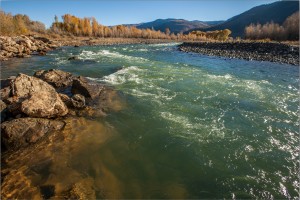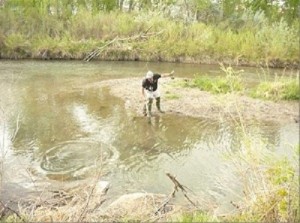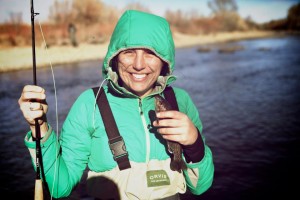If you have been wanting to volunteer with us, then here is your chance!! Below are some of the Volunteer Opportunities that we have coming up. If you are interested in any of these projects then please email Stephanie Scott directly at sscott@tu.org to sign up for one of the opportunities.
July Opportunities:
- July 16th - Josephine Falls Trail Decommission (partner with Cheyenne Mountain Chapter TU) - These work days will be from about 8:30-3:00. We will be working alongside of the Youth Core and other groups. We will meet in Colorado Springs and do a short car pool to the work area. From there we will hike in less than a mile to the work site. We will be using hand tools to loosen soil and remove evidence of the trail. We will also be moving brush and may do some plantings to cover the trail. These work days will be directed by the Rocky Mountain Field Institute (RMFI).
- July 18th-19th - Thunder/Box Lakes Gill Net Surveying (partner with Chris Kennedy in Rocky Mountain National Park) - Chris needs 2-3 people to help conduct gill net surveys on both of these lakes. Right now this is a full backpack trip and we will be camping at Thunder Lake (6.8 miles, 200 feet), but there is a cabin up there which Chris will try to get the use of. Chris has requested the use of the Thunder Lake cabin .
- July 22nd/July 23rd - Fence Repair (partner with Cheyenne Mountain Chapter TU)- Fence repair along the South Platte river in the South Park area (Hartsel). These work days will be from about 9:00 to 3:00. We will be working with CPW and other TU chapters. There are several State Wildlife Areas that are leased from private land owners. These land owners tend to graze cattle on their land. As part of the lease agreement CPW has constructed fences to keep livestock out of the riparian areas. CPW is charged with maintenance of these fences but does not have the manpower/budget to keep up with the work.
- July 23rd - S. Platte Musk Thistle Remediation (partner with Cutthorat Chapter TU) - Work days will be from 9:30 to 3:00, and meeting at 9AM near Deckers. This project is located right along the road and includes clipping and bagging musk thistle and severing its base at ground level. This will include no more than a half-mile hike at a your own pace, or you can travel by car. CUSP crew will remove the bagged thistle. Musk thistle is a noxious weed that outcompetes native plant species, becoming a monoculture when left untreated. This population is currently a threat to aquatic habitat, riparian grasses and insect populations. Musk thistle is a spikey plant so bring your favorite leather gloves, long sleeved shirts, and long pants. Deckers.
August Opportunities:
- August 13th - Colorado Trout Unlimited Outdoor Mentors Program - Chase Moore needs 1-2 volunteers to help with the CTU station. They will be teaching fly casting, tying and fish art. The event is from 9:00-2:00 at Barr Lake.
- August 20th - Horse Creek (partner with Cheyenne Mountain Chapter TU) - Work days will be from 9:30-3:00 and meeting at 9AM near Deckers. This work will include harvesting and transplanting willows, installing jute matting, raking and seeding native vegetation or planting trees along a two-mile stretch of Horse Creek, above it’s confluence with the South Platte. In-stream restoration work will occur at this location over the next two years to reduce sediment, replace damaged culverts and install bridges. The work will improve fish passage and habitat, as well as the safety of residents and visitors. This area of the Hayman burn scar continues to produce an excess of 65 tons of sediment annually into the South Platte River and continues to flood Highway 67. It is anticipated that this restoration will remove 50 to 55 tons annually, and is modeled after similar work – much of which included CCTU volunteers – that has successfully occurred in the higher Trail Creek drainage. As work progresses and the weather cools, project details will change, for example: willows can be transplanted at warmer temperatures than pine trees.
- August 30th-September 2nd - We will be in need of volunteers to help us fin clip rainbow X cutthroat hybrid trout at Mount Shavano Hatchery for our ongoing study comparing diploid versus triploid trout at Elevenmile Reservoir. This year we will be clipping fish August 30th – September 2nd and could use your help. Last year we clipped 68,000 fish in three days with the help of 70 people over the three day period. All of the work will take place outside at the Mount Shavano Hatchery in Salida. Parking will be available at the visitor parking area on the hill before you enter into the hatchery. We will plan on starting each day at 8 A.M. and should finish around 4:30 P.M. Volunteers should bring the following: Lunch, Water, Sunscreen, Chairs, Sunshades if available
September Opportunities:
- September 10th - CarpSlam - Denver TU is looking for volunteers to help with Pro/Am Carp Slam X on Sept 10,2016. The fishing venue will be 15 beats on the Denver South Platte River from Oxford downstream to 120th Ave. We are seeking people to work as Controllers and Rovers for the teams on the river. This is an opportunity to learn about fly fishing for carp and other species on the Platte for the smartest, slickest, smoothest anglers in the world. You should be in good physical condition and willing to work the full day from 7 AM to 5 PM. Lunch will be provided at Fuel Café. To volunteer please contact Mike Hobbs – CarpSlam Ops Manager – email: mhobbsco@gmail.com Volunteers will also receive swag and a ticket to the after party on the 14th floor of DaVita with one of the most spectacular views in Denver. Food, beer and wine will be served. Music provided by MTHDS. Tickets for the event are $35 presale and $45 at the door. For more info visit www.carpslam.org
- September 16th-18th - Girls Inc Fly Fishing Camp - This is a weekend commitment - still working on the details of the event and will post those once they are available.
- September 24th - This is the S. Platte River clean up - also still working on the details and will post once available.
Please RSVP for these events to Stephanie Scott sscott@tu.org





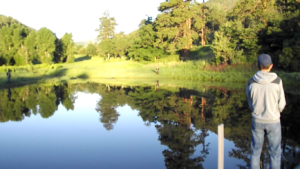 With many fish to be caught and much to be learned, the campers settled in to the barn that they would call home for the coming days. As the week progressed the campers gained experience in the worlds of conservation and fly fishing and made new connections with others who shared similar passions for the outdoors.
With many fish to be caught and much to be learned, the campers settled in to the barn that they would call home for the coming days. As the week progressed the campers gained experience in the worlds of conservation and fly fishing and made new connections with others who shared similar passions for the outdoors.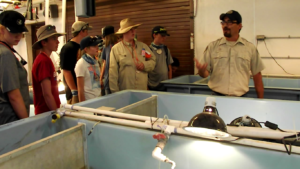 behind genetics, and were able to see what it takes to bring back a species from endangerment. Though the camp focuses on trout conservation, the hatchery harbors nothing but native species (meaning no trout), thus enabling campers to realize that conservation goes further than just the species most popular in Colorado rivers.
behind genetics, and were able to see what it takes to bring back a species from endangerment. Though the camp focuses on trout conservation, the hatchery harbors nothing but native species (meaning no trout), thus enabling campers to realize that conservation goes further than just the species most popular in Colorado rivers.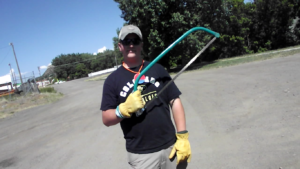 restoration project in collaboration with the Purgatoire River Anglers Chapter of CTU out of Trinidad. The Purgatoire River runs through Trinidad and has seen many restoration efforts in the past few years. Campers assisted in the removal of a fern called Russian olive- an invasive plant that consumes large amounts of water, taking it away from the river system. A day was spent using tools and chainsaws to cut down many of these large plants to better the fishery that the anglers of Trinidad value greatly.
restoration project in collaboration with the Purgatoire River Anglers Chapter of CTU out of Trinidad. The Purgatoire River runs through Trinidad and has seen many restoration efforts in the past few years. Campers assisted in the removal of a fern called Russian olive- an invasive plant that consumes large amounts of water, taking it away from the river system. A day was spent using tools and chainsaws to cut down many of these large plants to better the fishery that the anglers of Trinidad value greatly.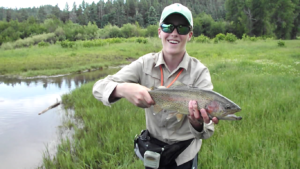 each day, and instruction from experienced guides and fishermen, campers enjoyed testing newly tied flies on eager fish. Astoundingly, at the end of five days, every young angler, regardless of skill level was able to successfully land a fish, with dozens of healthy trout seeing the net.
each day, and instruction from experienced guides and fishermen, campers enjoyed testing newly tied flies on eager fish. Astoundingly, at the end of five days, every young angler, regardless of skill level was able to successfully land a fish, with dozens of healthy trout seeing the net.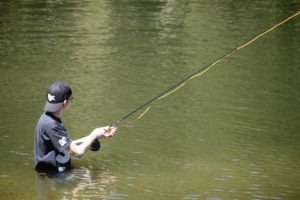 The first day began with a basic entomology class on bugs and their life cycles. Volunteers and camp leaders also showed the students what fish eat, and the flies that represent these species and phases. All of this was don in order to give students a better understanding of what the term “fly” fishing actually means.
The first day began with a basic entomology class on bugs and their life cycles. Volunteers and camp leaders also showed the students what fish eat, and the flies that represent these species and phases. All of this was don in order to give students a better understanding of what the term “fly” fishing actually means.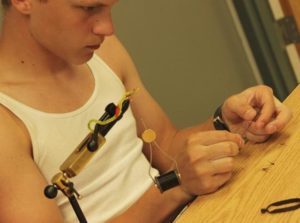
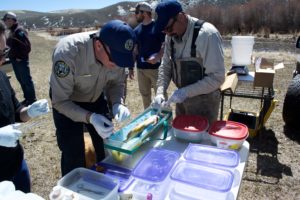 For this project, the chapter and partners purchased 15 RF tags that were surgically implanted into various fish in Tomichi Creek, a tributary of the Gunnison River. By attaching the RF tags to the fish in the creek, the chapter, CPW, and the partners involved could follow these trout and see what kind of movement they did and provide more information as to what causes fish to move.
For this project, the chapter and partners purchased 15 RF tags that were surgically implanted into various fish in Tomichi Creek, a tributary of the Gunnison River. By attaching the RF tags to the fish in the creek, the chapter, CPW, and the partners involved could follow these trout and see what kind of movement they did and provide more information as to what causes fish to move.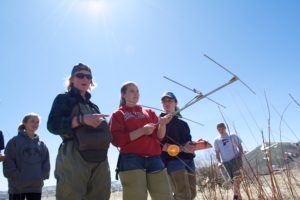 "We have had a few fish travel a pretty good distance. One fish in particular, which was tagged at the Lower Tagging Location, hung out in the same area we had released him in for several weeks. Then right around the same time the runoff started picking up he bolted upstream and was last detected near the confluence of Tomichi and Cochetopa Creeks. A run of over eight miles," said Wiles. "Now there is another tagged fish that has run nearly as far. This leads us to consider that the two missing fish may be farther up the Tomichi. This has effectively expanded our search area from a five mile stretch to who knows how big. Careful what you wish for."
"We have had a few fish travel a pretty good distance. One fish in particular, which was tagged at the Lower Tagging Location, hung out in the same area we had released him in for several weeks. Then right around the same time the runoff started picking up he bolted upstream and was last detected near the confluence of Tomichi and Cochetopa Creeks. A run of over eight miles," said Wiles. "Now there is another tagged fish that has run nearly as far. This leads us to consider that the two missing fish may be farther up the Tomichi. This has effectively expanded our search area from a five mile stretch to who knows how big. Careful what you wish for."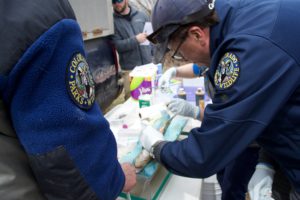 With help from a $2,500 grant from New Belgium Brewing, the chapter is expanding the project to include a website that will have a map of the Tomichi and points to where each fish is located.
With help from a $2,500 grant from New Belgium Brewing, the chapter is expanding the project to include a website that will have a map of the Tomichi and points to where each fish is located.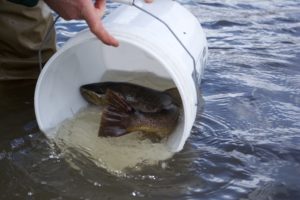 “I wanted to get the program going locally to help students develop more awareness and appreciation for our watershed and I thought the experience might generate some interest in resource management career paths,” said Jesse Kruthaupt, Upper Gunnison Project Specialist for TU. “In addition to those benefits, understanding trout behaviors in this area will be a very useful discussion making and monitoring tool for future restoration work. TU couldn’t have done this alone, Colorado Parks and Wildlife and the Upper Gunnison River Water Conservancy District deserve a big ‘Thank You’ for helping to make this happen.”
“I wanted to get the program going locally to help students develop more awareness and appreciation for our watershed and I thought the experience might generate some interest in resource management career paths,” said Jesse Kruthaupt, Upper Gunnison Project Specialist for TU. “In addition to those benefits, understanding trout behaviors in this area will be a very useful discussion making and monitoring tool for future restoration work. TU couldn’t have done this alone, Colorado Parks and Wildlife and the Upper Gunnison River Water Conservancy District deserve a big ‘Thank You’ for helping to make this happen.”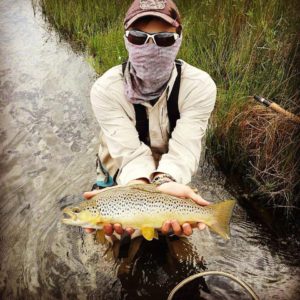
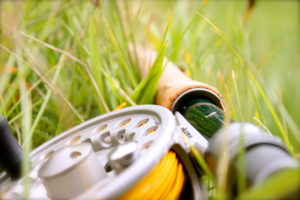
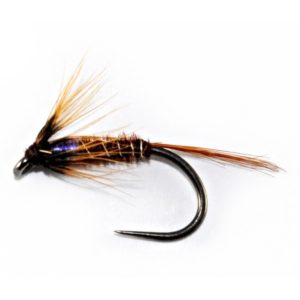
 Thus it is best to keep a fish in the water as much as possible, with a photo being taken swiftly- holding the fish only a few inches above the water.
Thus it is best to keep a fish in the water as much as possible, with a photo being taken swiftly- holding the fish only a few inches above the water.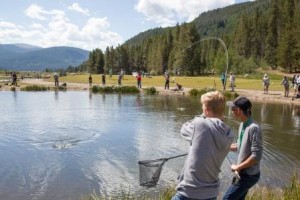
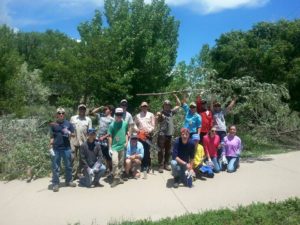
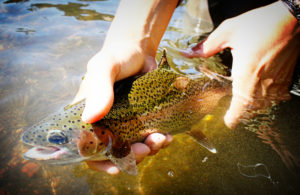
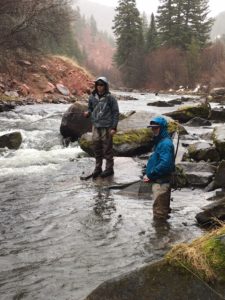 "It means a lot to me to be nominated as one top ambassadors in the Nation," said Muench. "I've easily put in a similar amount of time into the club as I have my final year of Engineering, I care a lot about the fly fishing club and it's amazing to realize that you're one of the best in the nation. No matter how much work I put in, I keep finding myself wondering if we could have done it better and what we've done wrong. It's just something else to have someone else say you're one of the best in the Country."
"It means a lot to me to be nominated as one top ambassadors in the Nation," said Muench. "I've easily put in a similar amount of time into the club as I have my final year of Engineering, I care a lot about the fly fishing club and it's amazing to realize that you're one of the best in the nation. No matter how much work I put in, I keep finding myself wondering if we could have done it better and what we've done wrong. It's just something else to have someone else say you're one of the best in the Country."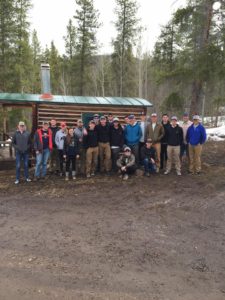
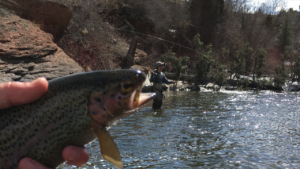 The success of the club doesn't stop there. David is hoping that the new president, Ryan Watson, will take the club even further and continue to expand, as well as have an improved focus on conservation.
The success of the club doesn't stop there. David is hoping that the new president, Ryan Watson, will take the club even further and continue to expand, as well as have an improved focus on conservation.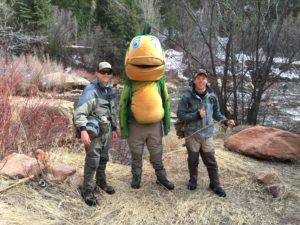 Being in the fraternity of a select few Costa Ambassadors, the role doesn't stop after graduation. Muench plans to continue to stay involved with TU and make a difference for Colorado's rivers and trout.
Being in the fraternity of a select few Costa Ambassadors, the role doesn't stop after graduation. Muench plans to continue to stay involved with TU and make a difference for Colorado's rivers and trout.